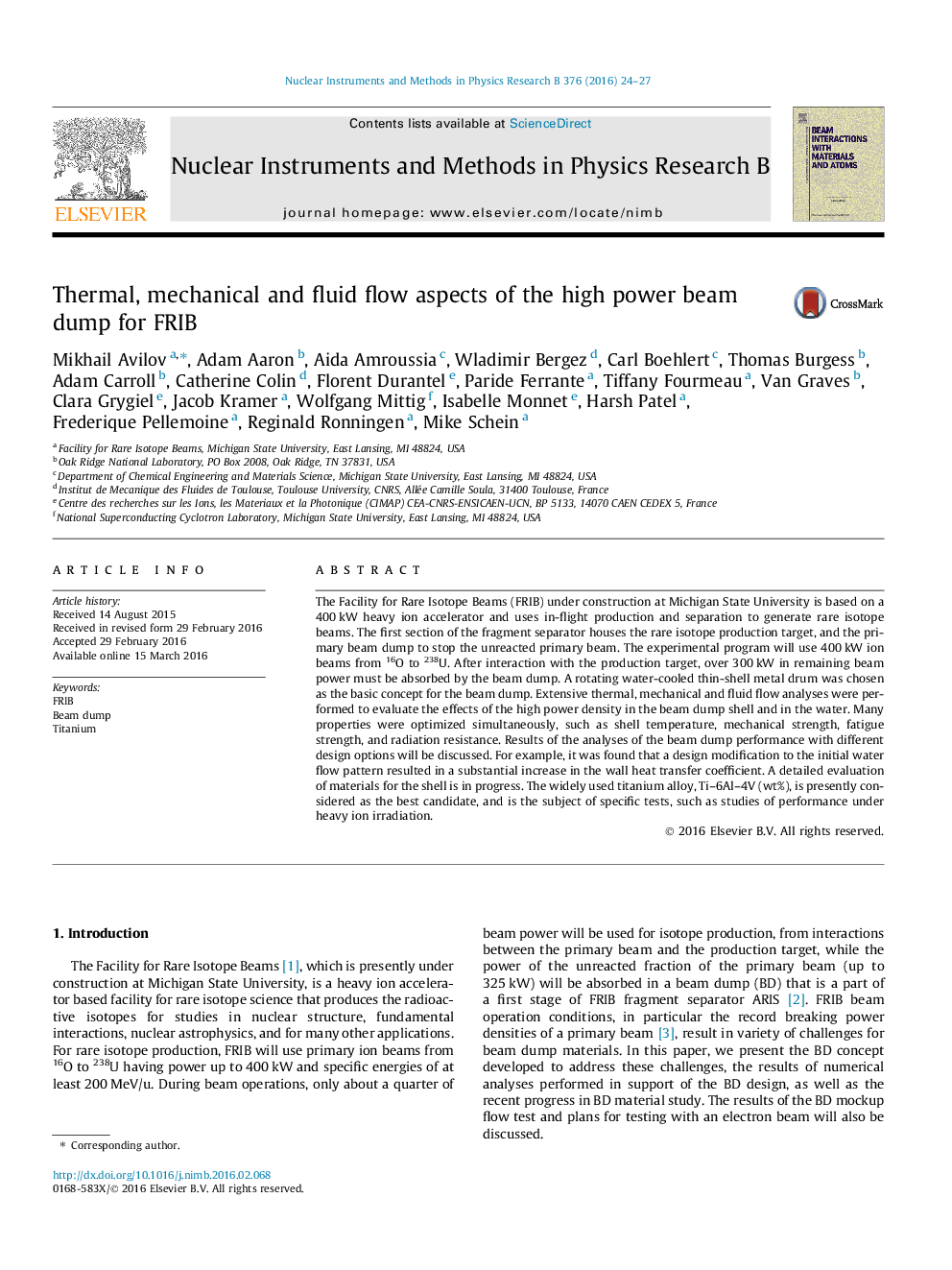| Article ID | Journal | Published Year | Pages | File Type |
|---|---|---|---|---|
| 8039704 | Nuclear Instruments and Methods in Physics Research Section B: Beam Interactions with Materials and Atoms | 2016 | 4 Pages |
Abstract
The Facility for Rare Isotope Beams (FRIB) under construction at Michigan State University is based on a 400Â kW heavy ion accelerator and uses in-flight production and separation to generate rare isotope beams. The first section of the fragment separator houses the rare isotope production target, and the primary beam dump to stop the unreacted primary beam. The experimental program will use 400Â kW ion beams from 16O to 238U. After interaction with the production target, over 300Â kW in remaining beam power must be absorbed by the beam dump. A rotating water-cooled thin-shell metal drum was chosen as the basic concept for the beam dump. Extensive thermal, mechanical and fluid flow analyses were performed to evaluate the effects of the high power density in the beam dump shell and in the water. Many properties were optimized simultaneously, such as shell temperature, mechanical strength, fatigue strength, and radiation resistance. Results of the analyses of the beam dump performance with different design options will be discussed. For example, it was found that a design modification to the initial water flow pattern resulted in a substantial increase in the wall heat transfer coefficient. A detailed evaluation of materials for the shell is in progress. The widely used titanium alloy, Ti-6Al-4V (wt%), is presently considered as the best candidate, and is the subject of specific tests, such as studies of performance under heavy ion irradiation.
Related Topics
Physical Sciences and Engineering
Materials Science
Surfaces, Coatings and Films
Authors
Mikhail Avilov, Adam Aaron, Aida Amroussia, Wladimir Bergez, Carl Boehlert, Thomas Burgess, Adam Carroll, Catherine Colin, Florent Durantel, Paride Ferrante, Tiffany Fourmeau, Van Graves, Clara Grygiel, Jacob Kramer, Wolfgang Mittig, Isabelle Monnet,
